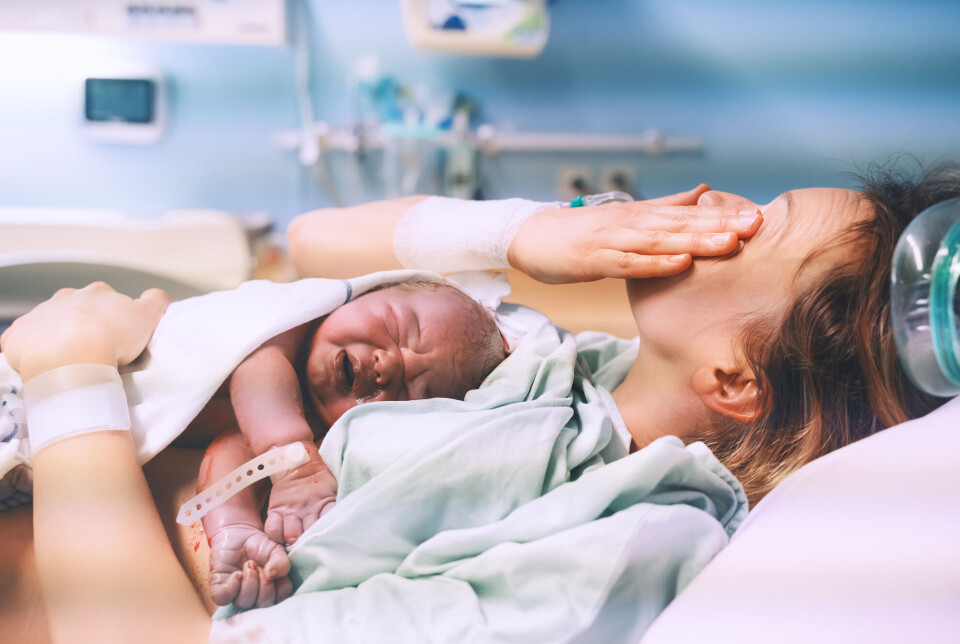
Study: The risk of cancer of the uterus decreases with each pregnancy
Cancer of the uterus is one of the most common cancers for women.
Most people may have heard of cervical cancer. This form of cancer is what doctors look for in routine pap smears that all women should have.
But uterine cancer, which is cancer of the lining or musculature of the uterus itself, is actually much more common. No routine test exists for this form of cancer. However, it is often detected early because it leads to vaginal bleeding.
In Norway alone, with its population of 5 millioner people, approximately 800 women are diagnosed with uterine cancer each year. That makes this form of cancer the fifth most frequent cancer affecting women.
Not all women have the same risk of developing uterine cancer, however. Several risk factors can increase the risk of this cancer. A Norwegian study has investigated some of the risk factors for endometrial cancer – the most common form of uterine cancer.
Risk increases with number of fertile years
The biggest known risk factor for uterine cancer is a high body mass index (BMI), but it is by no means the only one.
Previous research has shown that the risk of uterine cancer increases in women who started menstruating early and in those who enter menopause late. Women who have used birth control pills for many years, on the other hand, have a lower risk.
It thus appears that the chance of getting this type of cancer increases with the total time a woman ovulates and can have children.
But what about actually having children?
Link to number of births
“Observational studies with large datasets have shown a connection between the number of births and the risk of uterine cancer,” says Gunn-Helen Øiseth Moen, a researcher in the Institute of Clinical Medicine at the University of Oslo (UiO).
The more times a woman has given birth, the lower the risk.
“But we don't know if there is a causal connection,” Moen says.
Whether births affect the risk or there are other factors in these women that protect against cancer is still unclear.
This is what Moen and her colleagues have now investigated.
Lower risk with each birth
The researchers used a research method called Mendelian randomization. It uses variations in our genes to work out what causes what. (You can read more about this method in the fact box at the bottom of the page.)
Moen and her colleagues used data from UK Biobank. The databank includes information about the participants' genes and a range of other information, such as how many times women have gone through childbirth.
When the researchers analysed this material, it turned out that giving birth really did seem to offer protection against uterine cancer.
“The risk became lower with each birth,” says Moen.
A woman with three children, for example, has a 50 percent lower risk of uterine cancer than someone with no children.
This finding applies regardless of other risk factors, such as BMI, use of birth control pills, age at first menstruation and reaching menopause.
Oestrogen may play a role
Scientists do not yet know for sure why births offer protection. But they have some suspicions.
One possible explanation concerns the female sex hormone oestrogen. Perhaps the risk increases the more years a woman has a lot of this hormone in her body.
During pregnancy, high levels of the hormone progesterone might counteract this effect. The same would also apply when women take birth control pills, which also contain progesterone.
Another possibility is that the cells in the lining of the uterus are replaced in connection with a birth. This process would also remove cells that might otherwise become cancer cells.
In that case, this might explain a somewhat special finding of this study.
The risk of uterine cancer drops markedly according to the number of terminated pregnancies, spontaneous abortions or elective abortions.
Abortion lowers risk
“These effects emerged when we looked at the observational data,” says Moen.

The more abortions a woman had, the lower the risk of uterine cancer. Similar relationships have also emerged in previous studies.
“It’s possible that having an abortion removes quite a lot of tissue, and if you then have cells that could turn into cancer, they get removed in the process too,” says Moen.
However, she emphasizes that this is still just speculation. In this study, the researchers were not able to investigate the causal relationship between abortions and cancer, and we therefore do not know whether it was the termination of pregnancy itself that provided protection.
Based on the data in UK Biobank, it was also not possible to investigate whether contraceptive pill use in itself resulted in a lower risk of cancer.
“This could perhaps be the next step in further research,” says Moen.
Confirms previous findings
Jone Trovik, a professor at the University of Bergen, has also researched uterine cancer but has not taken part in this study.
She is not surprised by the new results.
“In essence, the results confirm previous associations between the number of years in the fertile period and a high BMI increasing the risk of uterine cancer,” Trovik writes.
“We also knew that women without children had a higher risk. But that the number of children born to a woman reduced her risk and that having one’s last child at an older age reduced the risk was perhaps not as well known.”
Trovik believes there has been less awareness that having an abortion was linked to a lower risk of uterine cancer, although this has also been shown in previous investigations.
Easier to find women with high risk
Trovik believes the strength of the study is that it is large and includes many participants. This reduces the risk of the results being due to chance.
A weakness is that these participants were mainly white European women. The researchers therefore do not know whether these results also apply to women with a genetic background from other parts of the world.
What the results mean in practice remains to be seen.
Trovik does not believe that any screening programme will be initiated to look for early uterine cancer.
Moen nevertheless believes that greater understanding of the risk factors will make it easier to find women with a particularly high risk of this form of cancer.
If future studies show that contraceptive pill use actually reduces risk, women in the high-risk group might be able to use them as a means of preventing uterine cancer.
Reference:
Shannon D'Urso et.al.: Mendelian randomization analysis of factors related to ovulation and reproductive function and endometrial cancer risk. BMC Medicine, 2022.
———
Read the Norwegian version of this article at forskning.no
































